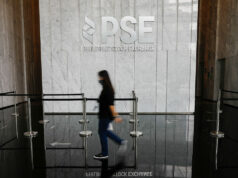A century of classic designs
IN THE late 1800s, German design professionals envisioned that German companies would be as competitive as those in England, the United States, and the global market. In the 1900s, 12 artists and 12 companies joined forces to establish Deutscher Werkbund.
The results of this collaboration are on view in the exhibit 100 Years of Deutscher Werkbund at the Metropolitan Museum of Manila, a presentation of the Goethe Institute supported by Design Week Philippines,
Deutscher Werkbund (DWB) — a German association of artists, architects, designers, and industrialists — was founded by architects Hermann Muthesius and Henry van de Velde in Munich in October 1907. Werkbund was divided into two factions: Muthesius advocated for mechanical mass production; while Van de Velde valued artistic expression. The association aimed at “the refinement of trade work in collaboration with the arts, industry and crafts through a process of education, propaganda and a united response to all relevant issues,” according to the exhibit posters.
“They want to design everything from the sofa to the city buildings. They don’t want to do a design for the upper class. They want to design for all people,” exhibit curator Beate Schmidt said during the exhibit walkthrough on April 4.
Arranged in seven chronological sections from 1907 to 2007, the exhibition includes the first DWB products with brand logos and printed posters, prototypes of housing models in the 1920s such as the Weissenhof Estate, timeless furniture designs including the Mies van der Rohe armchair (1927) and the Giancarlo Piretti folding chair (1967), minimalist kitchenware, and the question posted by the association of its future.
“The works of these architects, artists, and companies reflected architecture, art and design of the entire century in their respective political and social contexts,” Ms. Schmidt said.
As of 2007, the DWB has 980 members. It also has members in associated organizations: 255 in Werkbund Bavaria, 205 in Werkbund Berlin, and 200 in the Werkbund North.
According to Ms. Schmidt, the DWB is currently pursuing innovations for the changing environment, citing the future of the growing population in the city and transportation. With that, the members asked themselves, “Do they still need us?”
100 Years Deutscher Werkbund runs until May 25 at the Metropolitan Museum of Manila, Roxas Blvd., Malate, Manila, which is open Mondays to Saturdays from 10 a.m. to 5:30 p.m. Admission is P100. — Michelle Anne P. Soliman



